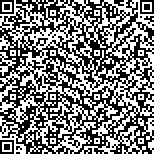| 摘要: |
| 在借鉴亚历山大“建筑模式语言”
理论与方法的基础上,筛选渭北地区传统村
落人居环境典型案例,基于“C—M—G”矩
阵对渭北地区传统村落的自然环境、建筑庭
院、公共空间、街巷空间、文化系统等进行构
成解析,分析其生态目标,提取生态手段。在
此基础上以村落空间结构为研究对象,对初
步提取的生态手段进行类型要素及影响因素
的分析,通过归类凝练总结出具备地域共性
和普适性的“生态模式语言”。尝试以此种
可灵活组合应用的图示化模式语言作为传统
村落人居环境生态理论与建设实践之间的有
效连接。 |
| 关键词: 传统村落人居环境 生态模式语
言 生态手段 生态目标 |
| DOI:10.13791/j.cnki.hsfwest.20210517 |
| 分类号: |
| 基金项目:2018国家社会科学基金西部项目(18XSH007) |
|
| Studies of Traditional Village’s Human Settlements Ecological Pattern Language Based on“C-M-G” Matrix Model: Taking Weibei Area in Guanzhong as an Example |
|
ZHANG Gejuan,HE Zhenying
|
| Abstract: |
| At present, the problems of human settlements in traditional villages occur frequently,
and the human settlements ecosystem has attracted extensive attention. However, few of the
existing research theories can provide technical support and practical guidance and suggestions for
design practice. Based on Alexander’s “model language” theory and method, this paper focuses on
the ecology of traditional village human settlements in Guanzhong Weibei area, and summarizes
the design means reflecting good ecological benefits in village human settlements by using the
“C-M-G” matrix model. It is expected to provide a new thinking mode and practical reference for
realizing the ecological coordination of traditional village human settlement environment system.
Firstly, the case analysis method is adopted to comprehensively compare the traditional villages
in Weibei from the aspects of ecology of human settlements, typicality of geomorphic features,
differences of village forms, representativeness of village houses and identification of cultural
forms. Finally, three traditional villages, Dangjia Village located in Hilly and gully terrain,
Baishe village close to river valley and terrace and Yaotou village located on the second terrace of
tableland, are selected as the main research cases.
Secondly, based on the principles of spatial orientation, problem orientation and
universality, the general goal of village human settlements, ecosystem health and ecological
service function improvement is set, which is divided into four levels. On this basis, a matrix
model composed of system component-ecological means-ecological goals is constructed to
clearly express the ecological construction methods of natural environment, architectural
courtyard, public space, street space and cultural system in the village system and their
ecological efficiency.
Finally, by analyzing three village cases and substituting them into the “C-M-G” matrix,
a large number of ecological design means with clear levels and meeting specific ecological
objectives are obtained, and their type elements are analyzed and further summarized and
refined. Through concise and clear text description and intuitive graphic expression, 16
ecological model languages with common and guiding significance are obtained as follous.
1) The language output of natural environment ecological model can be expressed as:
Tableland: form concentration + peripheral farmland + living on water + tableland
surface transfer; tableland slope: live on the top of the tableland + adjacent river valley + slopereconstruction + refined soil risk avoidance; gullies and valleys: steep gullies + living on sunny slopes + being good at relying on water + being
more important than changing fields.
2) The language output of architectural courtyard ecological model can be expressed as:
Courtyard: one-way inner slope + eaves corridor permeability + sun protection and warmth preservation + storage and drainage; kiln house:
select soil facies and ground + follow the slope and adapt to the situation + ventilation and Yang absorption + storage and drainage; entrance
space: concave buffer + space under eaves + isolation space + height difference interface + visual signs; courtyard space: north-south orientation
+ door building interval + front and rear combination + energy-saving layout + combination of houses and kilns
3) The language output of public space ecological model can be expressed as:
Clan Temple space: complete clan Temple + clear square boundary + functional adaptation + open front court + around the main lane;
defense building space: entity systematic reservation + line of sight corridor construction + industrial revitalization and activation; basic service
space: multiple functions of administrative places + suitable radius location of clusters + boundary residence space.
Node space: stitching + function transformation and endowing + concave convex layer + flexible boundary + fork amplification + vegetation
embellishment+Subject sign + visual center + cultural memory + guiding sequence
4) The language output of street and lane space ecological model can be expressed as:
Horizontal width and vertical width + retaining core difference pattern + surrounding traffic connection + main road access cycle + main
road series core nodes + secondary Lane style transition continuity + end lane guidance + height difference guidance and drainage
5) The language output of cultural system ecological model can be expressed as:
Cultural factors: Construction of Core Cultural Chain + infiltration of single point elements + continuation of folk customs + radiation
of ancestral temples; main body of cultural inheritance: endogenous cohesion + village collective cooperatives + intangible cultural heritage
inheritors + villagers' main body + diversified participation; cultural carrier: using idle rural houses + combination of ancestral temples and
memory + dynamic function activation + core carrier cultural radiation; cultural inheritance form: geo collective value identification + foreign
cultural exchange + activation of local industry + dynamic inheritance
In the design, targeted ecological model language can be selected according to the case situation, or through the combination of different
types of ecological model language, so as to guide the optimization practice of human settlements in traditional villages in Weibei area. |
| Key words: Traditional Village Habitat Environment Ecological Pattern Language Ecological Means Ecological Objectives |


